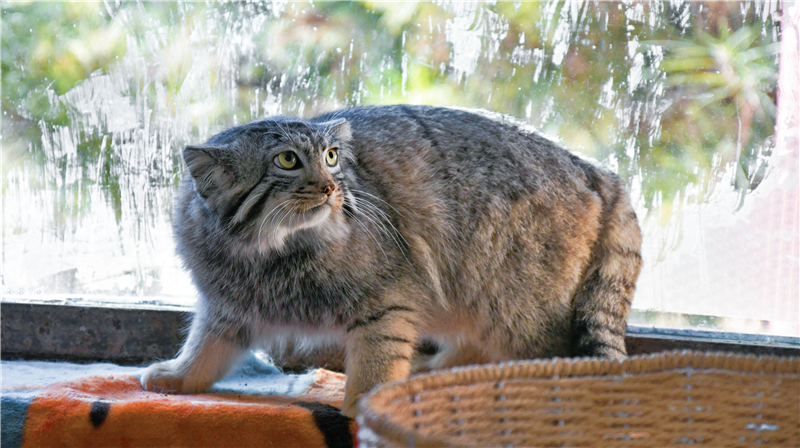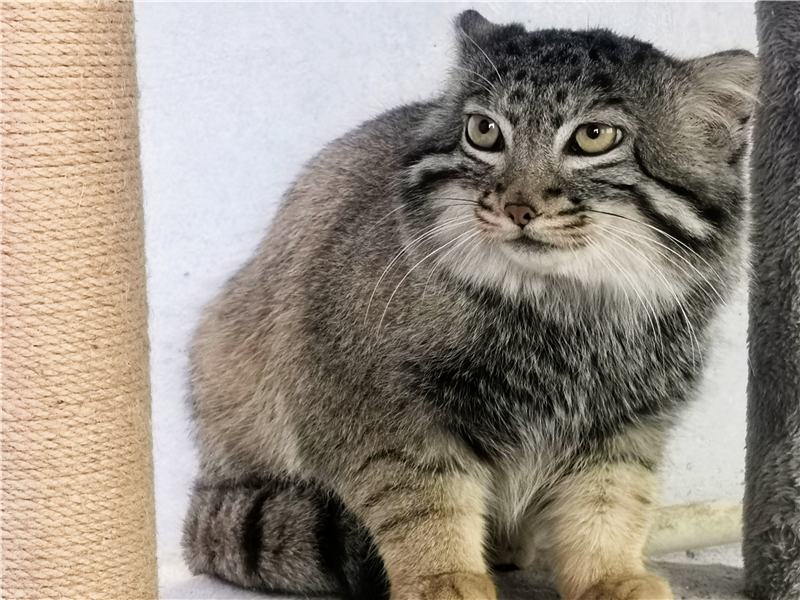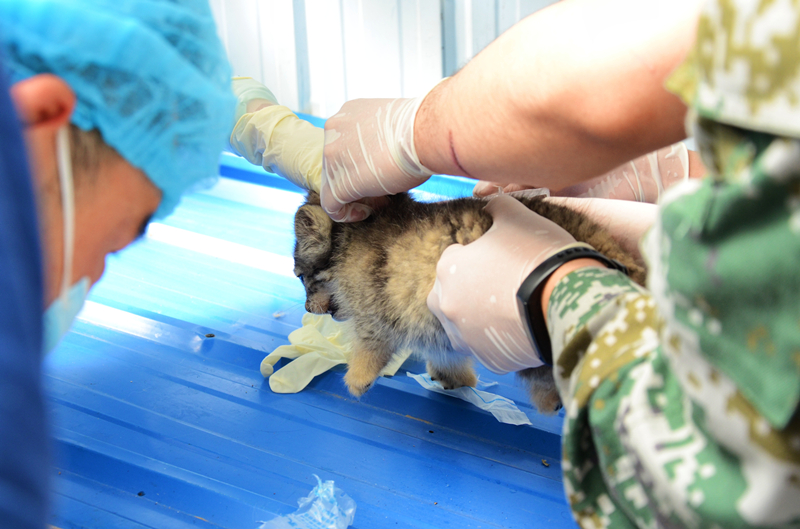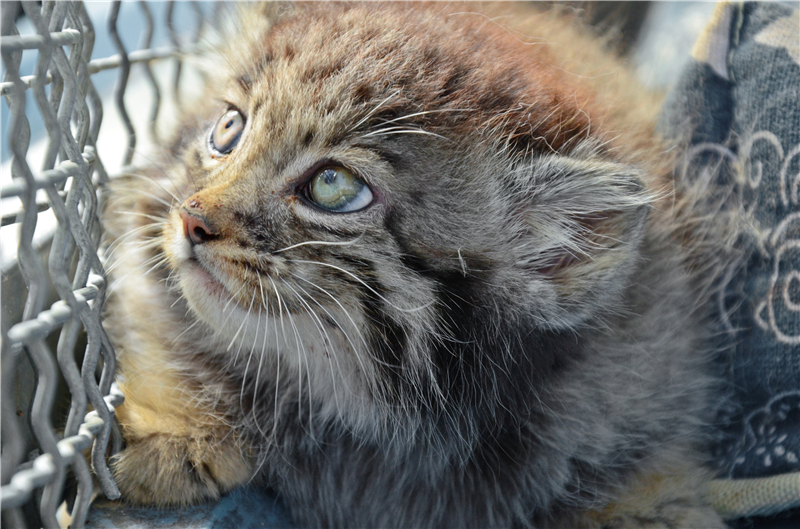Successful artificial breeding of Pallas’s cat a first for species in northwest China’s Qinghai
A female, artificially-bred Pallas’s cat at a zoo in Xining city of northwest China’s Qinghai Province named “Sun Daniang” turned 14 months old on July 7, the newborn kitten being the first successful case of artificial breeding for the species in the country.

Photo shows “Sun Daniang,” a female, artificially-bred newborn Pallas’s cat. (Photo courtesy of Qinghai-Tibet Plateau Wildlife Zoo)
Sun Daniang was bred by the Qinghai-Tibet Plateau Wildlife Zoo, the only zoo in China that houses and displays Pallas’s cats.
The newborn Pallas’s cat, which currently weighs 3.4 kilograms, is fed with fresh mutton or pork every day and is in good health. Apart from caring for the kitten, the zoo is also home to four other captive Pallas’s cats.
Artificially breading Pallas’s cats has been a conundrum in the world. As an ancient felid, the Pallas’s cat has an imperfect immune system. Toxoplasmosis, which is not very harmful to other felids, in fact leads to a very high fatality rate among the newborn kittens of the Pallas’s cat species.

Photo shows “Sun Daniang,” a female, artificially-bred newborn Pallas’s cat. (Photo courtesy of Qinghai-Tibet Plateau Wildlife Zoo)
The survival of the artificially-bred newborn Pallas’s cat has been a foundational achievement for the artificial breeding of the species along with other small felids, including Chinese desert cats, which reside in China.

Photo shows “Sun Daniang,” a female, artificially-bred newborn Pallas’s cat, during a physical examination. (Photo courtesy of Qinghai-Tibet Plateau Wildlife Zoo)

Photo shows “Sun Daniang,” a female, artificially-bred newborn Pallas’s cat. (Photo courtesy of Qinghai-Tibet Plateau Wildlife Zoo)
Photos
Copyright © 2022 People's Daily Online. All Rights Reserved.









